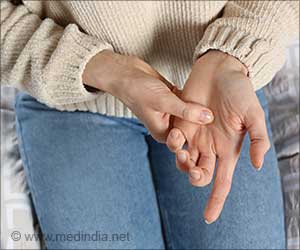Leicester University Scientists have debunked the myth that one in 10 kids are illegitimate without their legal fathers knowing that they have been cuckolded, saying that the real figure is 1 in 25.
Leicester University scientists have debunked the myth that one in 10 kids is illegitimate without the legal father knowing that he may have been cuckolded, saying that the real figure is 1 in 25.
To reach the conclusion, Leicester University scientists scrutinised the Y chromosomes of 1,600 unrelated men with 40 surnames to test the idea that there could be a link between the Y chromosome and surnames, which are both passed on to boys down the male line.For certain, uncommon surnames there was a clear association between the unique genetic markers carried on the Y chromosome with the surname. The findings suggest that many of the men sharing the same surname had a common male ancestor many centuries ago.
The development also enabled the researchers to estimate the probability of illegitimacy among the men carrying the same surname and found that it came out at between 1 and 4 per cent.
"People often quote a figure of one in 10 for the number of people born illegitimately. Our study shows that this is likely to be an exaggeration. The real figure is more likely to be less than one in 25," the Independent quoted Professor Mark Jobling of Leicester University, who carried out the study with colleague Turi King, as saying.
While common surnames like Smith and Brown did not show any significant link with the genetic markers of the Y chromosome, less common surnames like Attenborough, Haythornthwaite, Herrick, Stribling and Swindlehurst showed a definite association with the male chromosome.
According to the study, that indicates that as many as 80 or 90 per cent of the men with the more unusual surnames shared a common ancestor.
Advertisement
"Attenboroughs, for example, essentially form one big family of distant relatives. The Y chromosome type was the same even across spelling variants, which confirms that the spelling of names were formalised only relatively recently," she said.
Advertisement
THK/L








